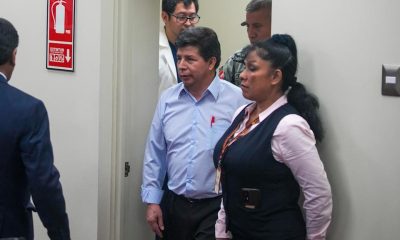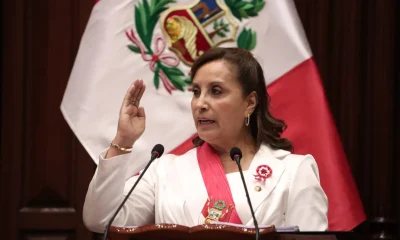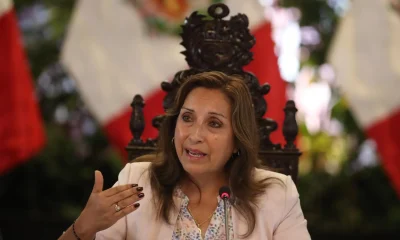International
The boarding school that fights for the future of seven indigenous peoples in the Amazon of Peru
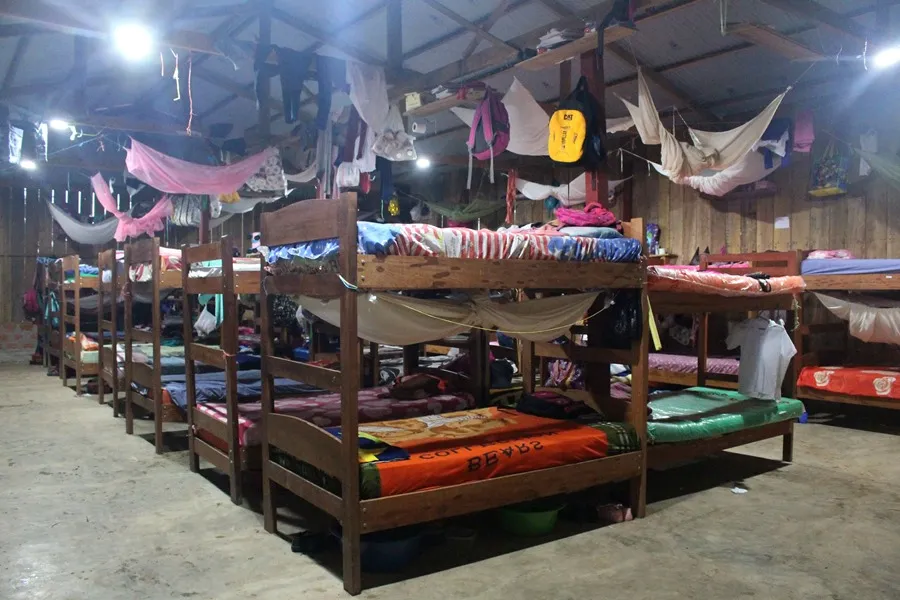
Shirts, pants and backpacks hang from wooden beams in a large room full of old bunk beds in which students from a particular educational center sleep in the heart of the Amazon of Peru. This residence and institute welcomes 248 adolescents of seven ethnic groups who seek to improve their future and, with it, that of their peoples.
The Yankuam Jintia high school (‘Luz en el camino’, in the indigenous language Achuar) is located in San Lorenzo, capital of the Datem del Marañón, and is an option for teenagers who do not have educational centers in their small indigenous communities.
It has teenagers from 12 to 18 years old of the shawi, condoshi, wampis, quechua, awajún, shapra and achuar ethnic groups, from 95 peoples, so the mixture of languages and cultures is breathed in the walls full of murals.
It houses realities of all kinds, from adolescents whose families have decided to give a better education for their children than their community can provide, to those who are orphans or have suffered abuse and did not have a safe home.
“We are always doing shifts so that they are not alone. We are always here with you at all times, they are small who come for the first year at 11 and 12 years old. They are very brave when leaving the family to come to study (…) They need the paternal warmth from us as mother and dad,” the director of the center, Sandra Elizabeth Flores, tells EFE.
He explains to EFE in the courtyard that this place was born as a male boarding school at the initiative of the missionaries of the Sacred Heart of Jesus, who saw 50 years ago the little access that young people in these areas had to education.
“It was seen that our young people didn’t adapt much. There was a little bit of discrimination, because they didn’t master Spanish. Then the students came sad,” says the director, adding that for this reason the boarding school also became an intercultural school that respected the various origins of adolescents.
She adds, proudly, that the center has also been open since 2016 for girls, who are now a little more than half of the total.
“We do a comprehensive job trying to ensure that the children are respected, that the original language is maintained and we are working with a culture of peace,” says Flores.
The residence has an area for girls and a boys’ area, with several rooms per age group, in which some students have their books, hygiene material and glossy shoes tidy, while others keep their muddy slippers next to their toothbrushes.
“The reality in this educational institution, on the one hand, is fun, we share cultures, beliefs, experiences with each other and we make the union as a family, but we lack some basic needs since the institution does not have enough resources,” Jean, a 15-year-old young wampi, representative of the students and whose native community is two days away from the institute, tells EFE.
In the wooden bunk beds, there are no mattresses for some, and there are no pillows or mosquito nets for everyone.
“Like all young people, we also need to have fun and we want tools like balls and poles to go to represent school when we play soccer and be presentable,” he says before adding that he wants to get a scholarship to study Law.
The director shares her frustration by agreeing that the center lacks resources of all kinds, but that every year teenagers who want to enter are left out.
For many, the objective is to get one of the scholarships granted by the Government to students of high performance and scarce economic resources to pursue a university career, so the routine of the institute is focused on studies, which occupy mornings and afternoons.
But Jean admits that there is no computer in the center, a need that has identified a project developed by Unicef and Adra at the Datem del Marañón, which seeks to protect children, adolescents and their access to health services.
“We have worked with them on the issue of communication, their skills and strategies so that they can be able to easily develop, lose their shyness in front of the public when they express themselves or when they want to talk,” says the project coordinator, Lady Mondragón.
They also promoted the creation of ‘spots’ with messages alluding to health care that they have elaborated in the dialects of their native peoples, something that is not usually common since they are usually disseminated in Spanish.
He adds that, through this initiative, they have known the importance of promoting health in their communities, where they will then share them, which also helps to give a voice to these adolescents who live in a rich interculturality.
A project that gives communities a future of a present and a future that emanates from their adolescents.
Central America
Senator Van Hollen Meets with Deported MS-13 Member in El Salvador; Trump and Bukele React

U.S. Democratic Senator Chris Van Hollen, representing the state of Maryland, held a meeting in El Salvador with deported MS-13 gang member Kilmar Ábrego García, a member of the criminal group classified by the U.S. government as a terrorist organization.
“Kilmar Ábrego García, miraculously resurrected from the ‘extermination camps’ and ‘torture chambers,’ now sipping margaritas with Senator Van Hollen in the tropical paradise of El Salvador!” wrote President Nayib Bukeleon X (formerly Twitter), sharing photos of Van Hollen, Ábrego García, and a lawyer sitting together at a Salvadoran hotel.
The deported gang member is seen wearing a plaid shirt and a flat-brimmed cap, seated at a table with glasses and coffee cups. The senator also shared images of the meeting on his own social media accounts.
Bukele reaffirmed that Ábrego will remain in El Salvador and will not be returned to the United States.
“Now that his health has been confirmed, he has earned the honor of remaining under the custody of El Salvador,” Bukele added.
Former U.S. President Donald Trump criticized the senator’s meeting with Ábrego on Truth Social, calling Van Hollen “a fool” for advocating for Ábrego’s return to the U.S.
International
Pope Francis Appears for Easter Blessing, Calls for Peace and Religious Freedom

Pope Francis, still recovering from pneumonia, appeared on the balcony of St. Peter’s Basilica in the Vatican on Easter Sunday and, with a faint voice, wished a “Happy Easter” to the thousands of faithful gathered to celebrate the Resurrection of Christ.
A month after being discharged from a lengthy hospital stay, the presence of the 88-year-old pontiff had remained uncertain, with the Vatican not confirming his attendance ahead of time.
Eventually, the pope made a brief appearance in a wheelchair shortly after 12:00 p.m. (10:00 GMT) to deliver his traditional “Urbi et Orbi” blessing (“to the city and to the world”).
Although no longer wearing an oxygen cannula, the Argentine Jesuit relied on a close aide to read his Easter message, which touched on major global conflicts.
Francis condemned the “dramatic and unworthy humanitarian crisis” in Gaza and called for a ceasefire, while also expressing concern over the “growing climate of antisemitism spreading across the globe.”
He further emphasized the importance of religious freedom and freedom of thought, stating that without mutual respect, “peace is not possible.”
International
Thousands rally nationwide against Trump’s threat to U.S. democracy

Thousands of protesters gathered on Saturday (April 19, 2025) in major cities like New York and Washington, as well as in small communities across the United States, in a second wave of demonstrations against President Donald Trump. The crowds denounced what they view as growing threats to the country’s democratic ideals.
In New York City, demonstrators of all ages rallied in front of the Public Library near Trump Tower, holding signs accusing the president of undermining democratic institutions and judicial independence.
Many protesters also criticized Trump’s hardline immigration policies, including mass deportations and raids targeting undocumented migrants.
“Democracy is in grave danger,” said Kathy Valyi, 73, the daughter of Holocaust survivors. She told AFP that the stories her parents shared about Adolf Hitler’s rise to power in 1930s Germany “are happening here now.”
In Washington, demonstrators voiced concern over what they see as Trump’s disregard for long-standing constitutional norms, such as the right to due process.
-

 International5 days ago
International5 days agoArsenal stun Real Madrid at the Bernabéu to reach Champions League semifinals
-

 Central America4 days ago
Central America4 days agoNicaraguan Exiles to Mark 7th Anniversary of 2018 Protests with Global Commemorations
-
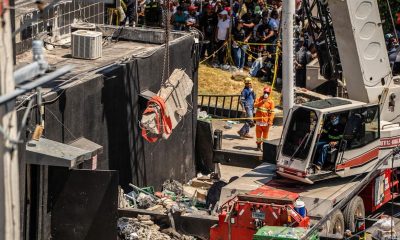
 International4 days ago
International4 days agoDominican ‘False Hero’ Arrested for Faking Role in Nightclub Collapse That Killed 231
-
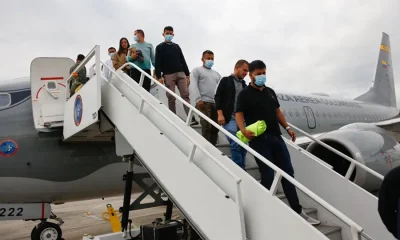
 International3 days ago
International3 days agoACLU seeks emergency court order to stop venezuelan deportations under Wartime Law
-
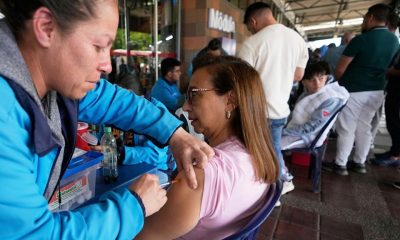
 International5 days ago
International5 days agoBogotá residents line up for yellow fever vaccine amid national alert
-

 International5 days ago
International5 days agoDeSantis’ immigration crackdown sparks alarm in Venezuelan Communities in Doral
-

 Central America3 days ago
Central America3 days agoUN complaint filed against Costa Rica over detention of migrant children
-
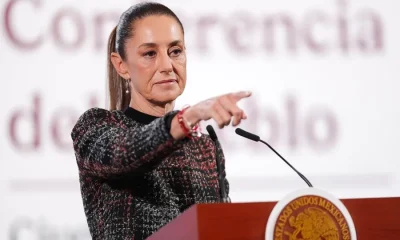
 International5 days ago
International5 days agoMexico refuses to restore ties with Ecuador while Noboa remains in office
-

 International1 day ago
International1 day agoThousands rally nationwide against Trump’s threat to U.S. democracy
-

 Central America15 hours ago
Central America15 hours agoSenator Van Hollen Meets with Deported MS-13 Member in El Salvador; Trump and Bukele React
-

 International15 hours ago
International15 hours agoPope Francis Appears for Easter Blessing, Calls for Peace and Religious Freedom
















